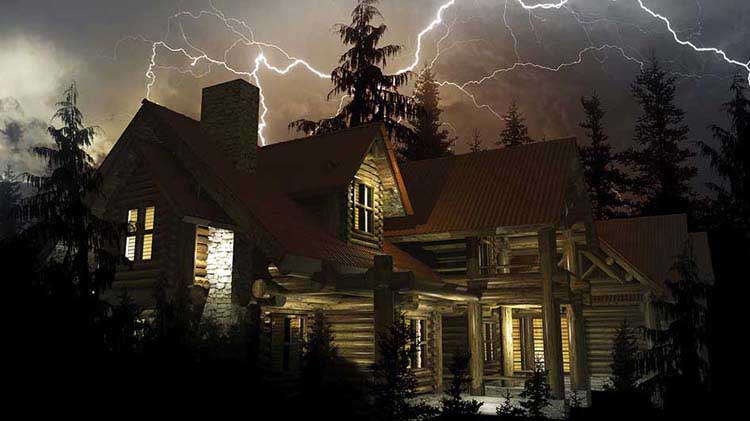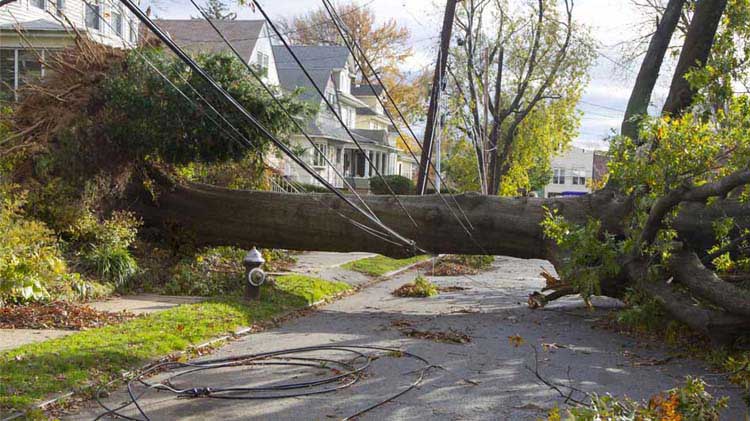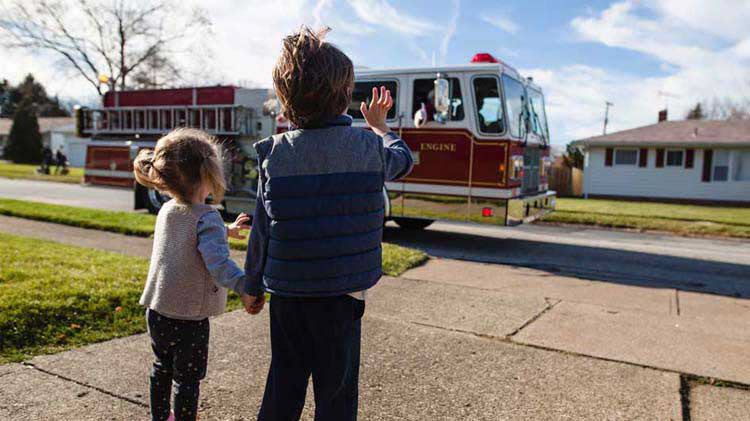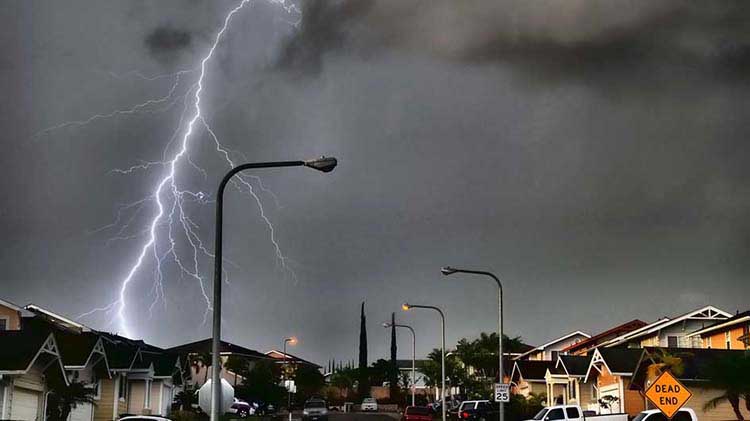Lightning protection for your home
Lightning protection can help you limit your risk of lightning damage.
How can you protect your home against lightning and electrical surges?
Electricity means much more than an ever-growing variety of conveniences. The dangers lightning and electrical surges present are very real. For example, a sudden electrical surge could silently damage many of your appliances. An arc fault could spark an electrical fire — in fact, electricity is the third-highest cause of home fires every year.
Or lightning could strike your home, causing extensive damage. Lightning is the most dangerous and frequently-encountered weather hazard that most people experience each year, according to the National Severe Storm Laboratory. So take time to review some steps you can take to help protect yourself and your property.
Whole-house surge protection
Where do electrical surges come from?
An electrical surge is a sudden increase in voltage that can damage your home's electrical components. A surge can happen when:
- Your electric utility switches power from one area of the grid to another.
- Air conditioning units, furnaces, refrigerators or vacuum cleaners turn on or off.
- Electric utility lines touch one another.
- Nearby lightning strikes occur.
Surges can travel down power, telephone and cable TV lines. When there is a surge, unprotected electronics and appliances can be damaged. The damage builds up over time, until the appliance components fail. Properly installed Surge Protection Devices (SPDs), combined with a good grounding system, should help protect your electronics and appliances from all but the most severe electrical surges. An SPD diverts the surge to the ground around your home, where the surge dissipates. That's why a good grounding system is important for surge protection.
A step-by-step electrical surge protection plan
- Step 1: Consider asking a qualified electrician to check your home's grounding system to help ensure it's in working order.
- Step 2: Plug your electronics and appliances into point-of-use SPDs. Use single-port SPDs for appliances that only have a power cord and multi-port SPDs for appliances that have antenna, cable, telephone and power cords.
- Step 3: Consider installing a whole-house surge protection system to absorb larger surges that come from outside your home. This device can be installed on the electrical meter by the utility company, or next to the electric service panel by an electrician.
What is a home lightning protection system?
When lightning strikes, the resulting electrical surge can travel through utility transmission lines to nearby homes. And, of course, a direct lightning strike on your home can cause serious damage. But if your home has a lightning protection system, a surge caused by lightning may more often be safely deflected into the ground. A lightning protection system is not intended to prevent a strike. Its purpose is to provide a safe path on which the current can be safely directed to the ground.
Keep in mind this is not a do-it-yourself project. Only experienced and reputable lightning protection contractors listed by Underwriters Laboratories (UL) listed and certified by Lightning Protection Institute (LPI) should install these systems. Qualified specialists use UL-listed materials and ensure that methods of installation comply with nationally recognized safety standards of LPI, UL and the National Fire Protection Association (NFPA).
What does a lightning protection system look like?
- Air terminals: Also referred to as lightning rods, these inconspicuous copper or aluminum rods are vertically mounted on the roof at regular intervals. The air terminals serve as strike receptors, designed to intercept the lightning strike.
- Main conductors: Constructed of aluminum or copper, these braided cables connect the air terminals to the other system components and the grounds.
- Grounds: A minimum of two ground rods, driven at least 10 feet deep in the earth are required for all structures. The ground terminations direct the dangerous current into the ground, to eliminate the chance of injury or damage to the structure.
- Bonds: Bonding joins metallic bodies (roof components) and grounded building systems to the main conductor to ensure conductivity and prevent side flashing (lightning jumping between two objects).
- Surge arresters and suppressors: A surge is an increase in electrical current due to a lightning strike on or near a power line or utility service. Surge suppression is installed at the electrical panel(s) to prevent the entrance of overvoltages which can cause a fire. Arresters installed at electrical panels help protect heavy appliances and prevent fires at service panel entrances. Additional devices may be needed to protect other in-house electronics. Surge protection devices are typically installed in conjunction with a lightning protection system.
- Tree protection: The Lightning Protection Institute recommends that any tree taller than a home or within 10 feet of the structure be equipped with a lightning protection system. Trees do not offer protection and many homeowners choose to have trees protected for their own value. An unprotected tree in close proximity to a structure can also create a side-flash hazard to the nearby home.
These systems should be designed and installed by a qualified lightning protection system contractor.
What should you do when lightning is nearby?
Seek shelter immediately. An enclosed building offers the best protection. If there are no sturdy buildings nearby, get into a vehicle and close the windows.
- If you cannot find any shelter, go to a low-lying area, crouch down with your feet together and hands on your knees, and wait until the storm has passed.
- Keep away from utility poles, towers, isolated trees or bodies of water.
- Don't use a corded phone except in an emergency. Cordless and cell phones are safe to use.
- Keep away from electrical appliances, TVs, fireplaces, metal objects, windows or doors.
- If someone has been struck by lightning, call 9-1-1 or your local ambulance service. Give first aid if you are qualified. Lightning victims are safe to touch and need medical attention immediately.
For additional information on how to protect your family and home, or for a list of certified professionals, please contact the Lightning Protection Institute or Underwriter Laboratories.




